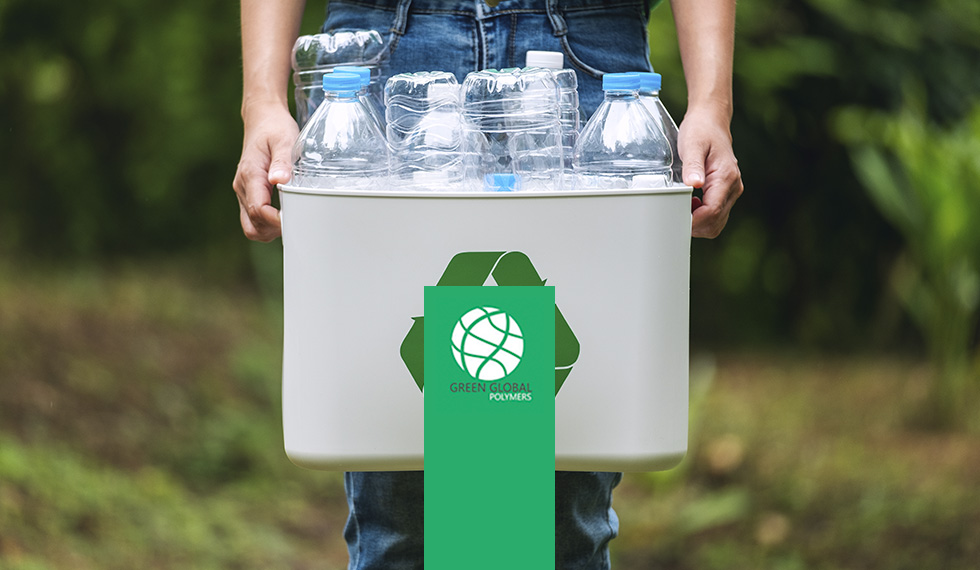¿Qué tipo de plásticos se pueden reciclar y cuáles no?

Cuando hablamos de plástico y sobre reciclaje debemos tener en cuenta que existen muchos tipos de plástico y que su uso le aporta ciertas características. Para ello, se ha diseñado una serie de símbolos triangulares que acompañan a los envases y contienen un número y unas iniciales en su interior que indican que tipo de material es.
¿Qué materiales son los que pueden formar el envase de plástico?
– PET
Este es el plástico más conocido y lo podemos encontrar en botellas de agua y en tejidos. El PET es resistente, de alta transparencia, bajo peso, impermeable y es apto para el uso alimentario. También se caracteriza por ser el plástico más fácil en reciclar.
– HDPE
Conocido también como PEAD. Es un plástico que está presente en nuestra vida cotidiana. En cuanto a sus características, es más rígido que el PET y tiene alta resistencia química y térmica. Este plástico se utiliza para la creación de botellas de detergente o para las garrafas de aceite.
– PVC
Este es el plástico más transformable y se puede utilizar para mangueras, juguetes, pieles sintéticas o incluso para tuberías. Lo que le caracteriza es la dificultad que tiene para ser reciclado.
– LDPE
Este plástico es el que se utiliza para fabricar bolsas y guantes de plásticos, el papel film o el plástico de burbujas. Aunque se pueda reutilizar este tipo de plástico no siempre se puede reciclar.
– PP
Es un plástico de bajo coste, además es fácil de moldear y colorear con lo que se pueden elaborar pajitas de refresco, tapones de botella o tupperwares. Es un plástico fácil de reutilizar y viable para reciclarlo.
– PS
En el ranking de plásticos más consumidos se encuentra en el cuarto puesto, por detrás del polietileno, el polipropileno y el PVC. Existen cuatro tipos de PS: cristal, siendo su característica principal la transparencia, la rigidez y podemos encontrarlo en las cajas de los discos compactos; de alto impacto; extrusionado o extruido; este tipo se suele utilizar como aislante en la construcción; y expandido que solemos encontrar este tipo de material en bandejas de productos de alimentación frescos o como aislante.
– Otros materiales
Aquí residen aquellos plásticos que combinan diferentes tipos como los juguetes. Estos tipos de plásticos son muy difíciles de reciclar y costosos, lo que hace que no siempre sea posible su reciclado.
Por tanto, el PET correspondería al número 1 que dará vida a nuevas botellas mezclando con al menos 50% de plástico no reciclado. El número 2 corresponde al HDPE y con él se puede dar nueva vida a productos como botellas de detergente, garrafas de aceite o botellas de leche. El PVC corresponde al número 3, y gracias a él podemos crear mangueras, juguetes infantiles, pieles sintéticas, tarjetas de crédito, tuberías o interiores de automóviles. Con el número 4 encontramos el LDPE que nos da la posibilidad de crear bolsas, guantes de supermercado, film de cocina y plástico de burbujas. El PP se clasifica con el número 5 y con él creamos pajitas de refresco, tapones de botellas y envases de yogures o mantequilla. Con el número 6 se clasifica el PS que nos permite crear cajas de CD y envases de corcho blanco. Por último, todos aquellos plásticos que no corresponden a ninguna de las clasificaciones anteriores se engloban en el número 7 con el que podemos crear fibras de nylon, biberones, CD, envases médicos y piezas de coche.
En Green Global Polymers trabajamos con cada uno de estos plásticos con la finalidad de proteger el planeta del agotamiento de los recursos. Por eso, gracias a la actividad que realizamos contribuimos en el reciclaje y en darle una nueva vida al plástico.
Para ello, tenemos una planta de recuperación en Ribarroja donde llevamos a cabo la transformación del plástico que recibimos de los contenedores amarillos. Gracias a este proceso podemos obtener plástico reciclado de calidad para que pueda ser de nuevo utilizado.



